CAPITOL & PROMONTORY (Day 2 - part 2)
Our tour of the second floor continued.
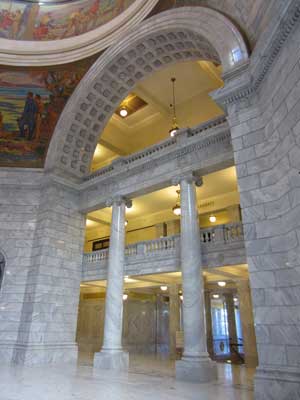
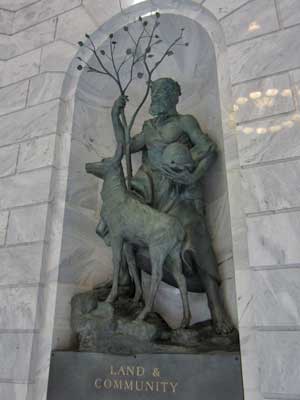
(left) The columns supporting the dome weigh 37,000 pounds each. The were pre-made and delivered on a train from Georgia where the marble was from.


Judy showed us a crack in the floor caused by an earthquake from the nearby Wasatch Fault. Fortunately the new base isolation system lets the building easily handle up to a 7.5 earthquake.


On both the east and west side of the rotunda is a long atrium with a large skylight

The mural on the west end (above the House of Representatives) is the Passing of the Wagons. It depicts the arrival of the pioneers in the Great Salt Lake Valley in 1847.
The East and West Lunettes are a tribute to the early pioneers. Painted in 1917 by Gilbert White and Girard Hale, they were the first commissioned works of art in the capitol.

The mural at east end (above the Supreme Court) is the Madonna of the Wagon. It shows how the pioneers turned a dry desert into lush farmland using irrigation.
Next we entered the state reception room, also known as the gold room. Decorated in a European style, it's used for special events and to entertain visiting dignitaries.




Next was a super quick visit to the Governor's office.


Supposedly some of the furniture is made from trees that were knocked over by a tornado in 1999.
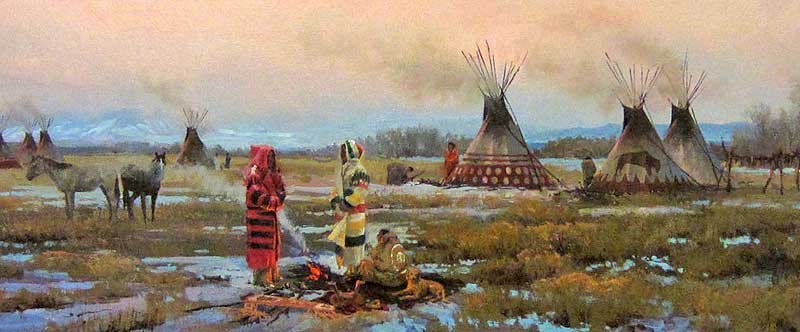
Chill in the Air by Don Ricks (1929 - 1996)

Bingham Canyon #1 by Henry "Harry" Lavender Adolphus Culmer (1854 - 1914)
The Bingham Canyon Open Pit Copper Mine (or Kennecott Copper Mine) is the largest man-made excavation in the world. Copper ore was first discovered in Bingham Canyon in 1848 by the Bingham brothers, Sanford and Thomas, as they grazed their cattle. Following the advice of their leader, Brigham Young, they did not stake a claim or pursue any mining operations, as that would have severely damaged the survival of many local young settlements. In 1850, they migrated west, leaving the area open. In 1863, mining began. A railroad reached the site in 1873 and open-pit mining began in 1896. In 1906, this mine began and expanded rapidly. It is considered to have produced more copper than any other mine in history, more than 19 million tons. The pit is over 0.6 miles deep, 2.5 miles wide and covers 3 square miles.
Our tour continued...
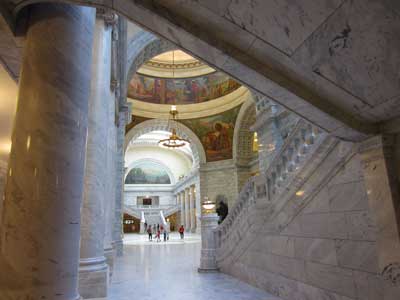


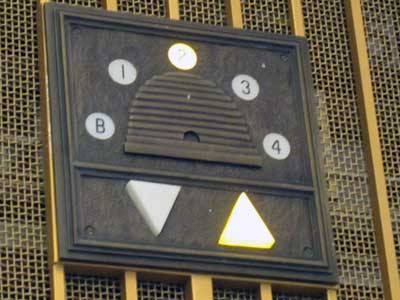
Beehive images were all over the place!
We took an elevator up to the third floor, also known as the legislative floor since it contains the chambers for the House, Senate and the Supreme Court.


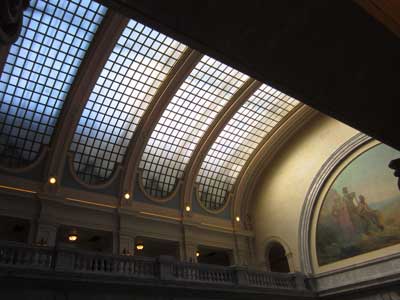



The House of Representatives has 75 members.
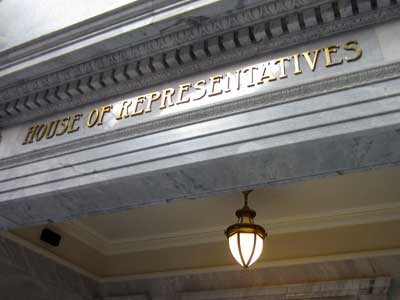

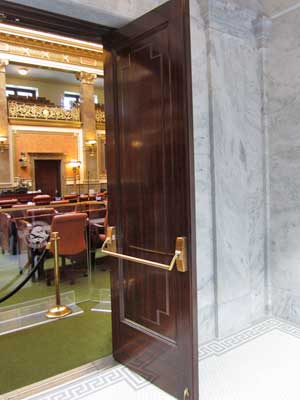
The doors are actually metal (simply painted to look like wood) as part of a fire containment system.
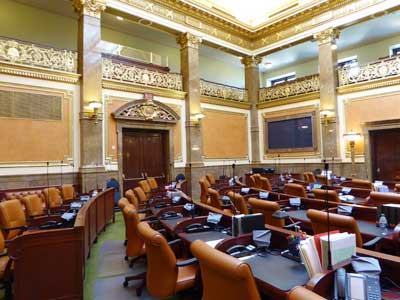

New desks were based on the originals but now have enough room for modern technology.

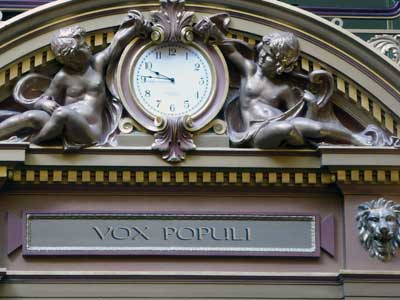
Vox populi = voice of the people
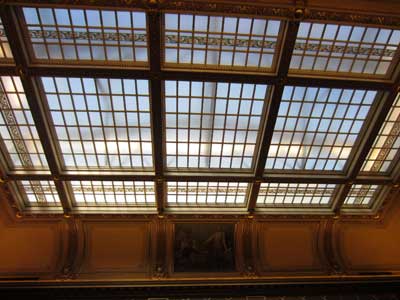

Overhead was a large skylight.

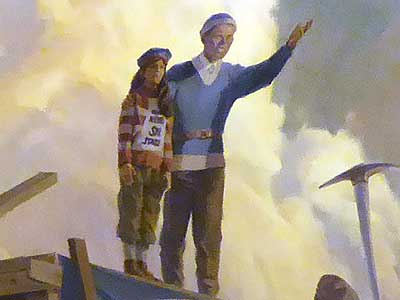
"Engen Brothers Bring Skiing to Utah" by David Koch in 2007. Alf (1909 - 1997), Sverre (1911 - 2001) and Corey (1916 - 2006) Engen moved to Utah from Norway. Renowned as excellent skiers, they're shown here building a ski jump.


Added during the renovation was "Seraph Young votes," painted in 2007 by David Koch. Seraph Young was one of the first women to cast a vote in Utah in 1870. Although only 25 women voted in that election, over 2,000 voted six months later in a general territorial election. .... "The Dream of Brigham Young" was painted by Vincent Aderente (1880 - 1941) and shows Young standing near the Salt Lake Temple holding blueprints.


(left) another beehive .... (right) A wyvern is a type of griffin. It serves as a guardian of the building.
return • continue

